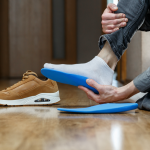Triangular Fibrocartilage Complex (TFCC) Injury The TFCC is a combination of ligament, tendon and cartilage and therefore name as Triangular Fibrocartilage complex. This ligament has a major function of stabilizing and supporting the wrist. It is an important structure connecting the forearm bones to the small bones in wrist, thereby giving you the mobility when you grip object tightly or rotate the wrist. The TFCC provides these movement more support and range while behaving as cushion in the area. What causes TFCC strain or tear? There are two ways your TFCC can give up – either due to injury or any degeneration of these ligament. Injury – most often when you fall on outstretched hand is a common precursor of the TFCC injury or tear. The mechanism could be a sudden impact or a twisting injury. Older adults are more vulnerable as there can be thinning of these ligaments with…
Read More









